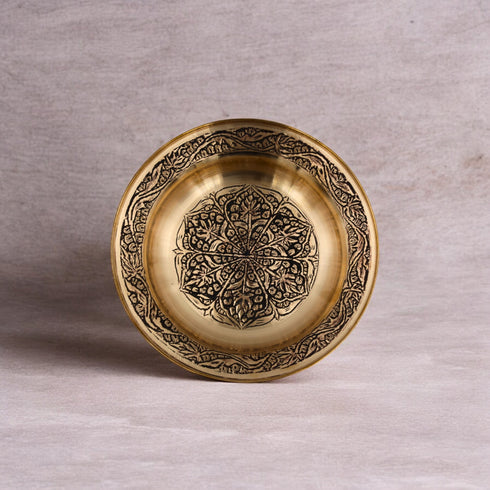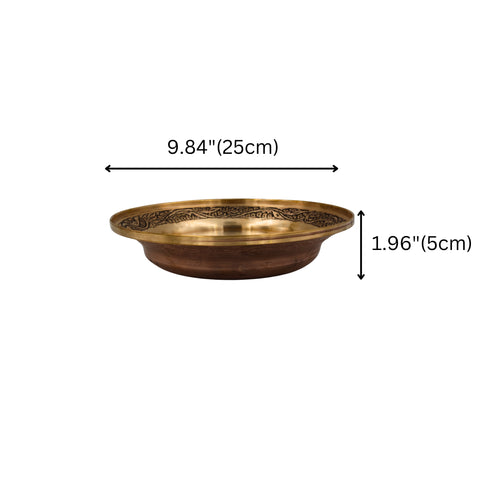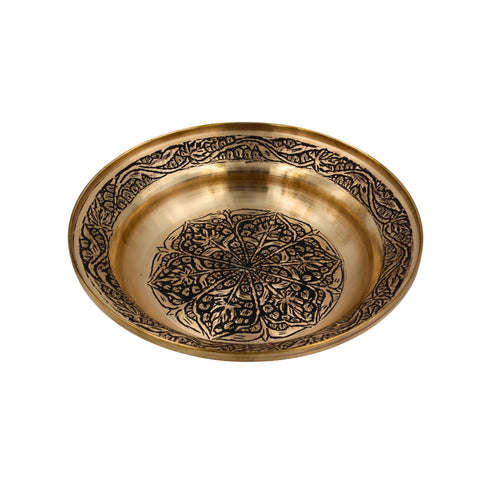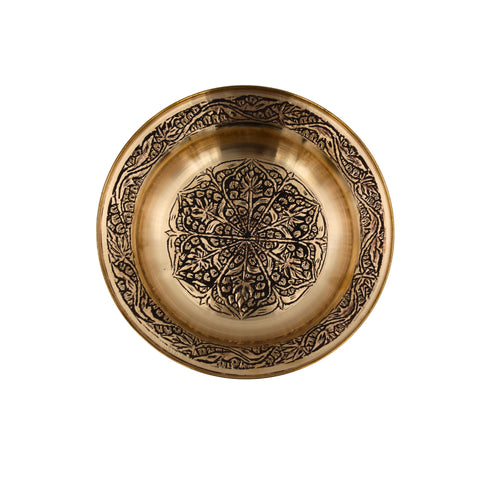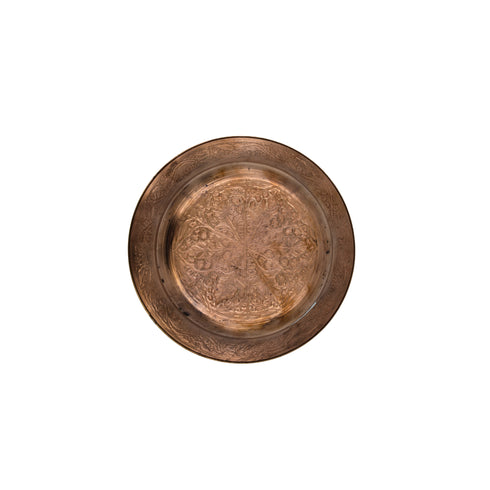Out of Stock
Kashmiri Copperware Plate with Hand Engraved Design
₹3,309
₹2,309
Save 31%
Introducing a stunning Kashmiri copper plate with an exquisite vine design. Perfect for dining or serving, this versatile plate adds a touch of royalty to any meal. Elevate your hosting and impress guests with this elegant and sophisticated piece.
Buying for a group or event?
Make a bulk enquiry

 Product Details
Product Details
- SKU Code: KW_CP_00443_CP
- Art Type : Copper Art
- Product : Copperware
- Material : Copper
- Raw Material used : Copper
- Dimensions : Length-25cms, Width-25cms, Height-5cms
- Design : Black engraved vine design
- Color : Copper
- Copper Weight: 600 gms
- Category : Decor
- Sub-category : Kitchen Decor
- Packaging Content : Copper Plate X 1
- Country of Origin : India
 Features
Features
 Preserving Cultural Tradition (Kandkari)
Preserving Cultural Tradition (Kandkari)
The unparalleled artistry and profound cultural heritage of Kashmir have brought the region international renown. From the rugs' undersides to the pashminas' threads to the copperware's lustre. The most exquisite and unadulterated kind of art has come to us from Kashmir. Copperware, also known as kandkari work, has a long and illustrious history that begins in the 8th century with the travels of the Islamic philosopher and saint Mir Syed Ali Hamdani (RA) from Central Asia to India. Not only was he an accomplished scholar, but he was also a charming art lover, particularly of etched copperware. He transferred masters of this technique from Central Asia, particularly Persia, to India so that it may flourish there and become popular among the inhabitants; they would then teach the locals how to do the same enchanted magic and disseminate it throughout the region. But this skill had strong backing under the rule of the great Kashmiri king Budshah Zain-ul-Abideen, who was also an active catalyst and pioneer in bringing the craft back to its former glory. Since then, Kashmir has been forever grateful to this skill for elevating the reputation of the state
 Manufacturing Process
Manufacturing Process
- Choose the Right Materials
- Copper of Superior Quality Chosen for their long-lasting nature and exceptional workability high-quality copper sheets or ingots are the starting point of the procedure
- Consolidation and Molding
- To get the right consistency copper must be melted in a furnace at very high temperatures
- To form the molten copper it is either cast into molds or hammered depending on the item The use of anvils and hammers by skilled artisans to manually shape copper sheets into the required shape is a common component of traditional methods
- Building the Foundation
- Extensive hand-hammering is used to create the fundamental shape of the item be it a bowl plate vase or any other ornamental or practical item This is the initial shaping process
- To make copper more malleable and less likely to crack under stress a process known as annealing is employed
- Meticulous Schematic and Etching
- Tracing the Design Craftspeople carefully trace the elaborate patterns and designs onto the copper surface Floral patterns paisleys and chinar leaves are common traditional Kashmiri themes seen in these designs
- Craftspeople painstakingly carve the patterns into the copper using sophisticated equipment The elaborate patterns are painstakingly carved out a process that demands exceptional skill and accuracy
- Using the repoussé process which involves working on the back side of the copper sheet to create a raised pattern on the front artists are able to achieve raised designs
- Bringing Everything to a Shine
- Surface Smoothing Files and sandpaper are used to eliminate any rough edges and defects from the engraved and shaped item Achieving a bright sheen is the goal of the polishing process In order to bring out the copper's inherent shine this process may include multiple passes with varying ab
 Note
Note
- Each product may feature slight variations in color or craftsmanship which adds to its uniqueness and beauty
- Images may differ from the actual product in form and color due to variations in screen resolutions and device settings
- Copperware are renowned for their exceptional health benefits and aesthetic appeal For optimal use we recommend using the copperware for serving the cuisine rather than cooking Copper can react with salt and acidic foods so it's best to avoid cooking in it Additionally to preserve the integrity of the copperware please limit food storage to a maximum of 4 hours Enjoy the beauty and benefits of copper while keeping your culinary experience delightful and safe


